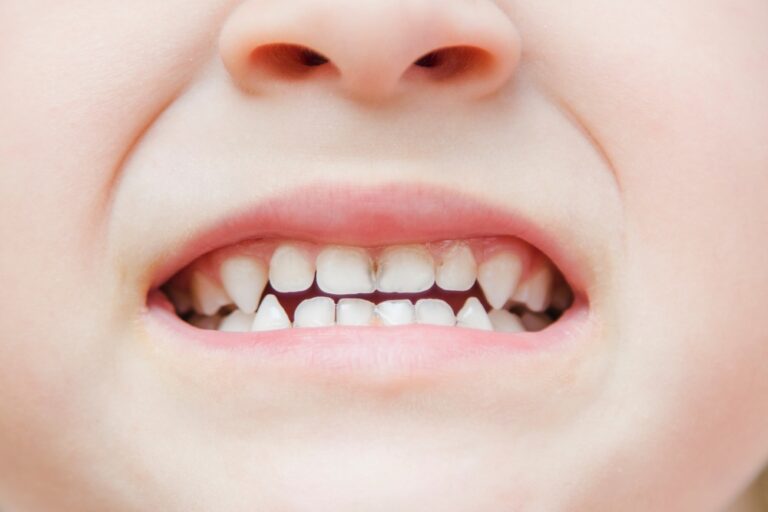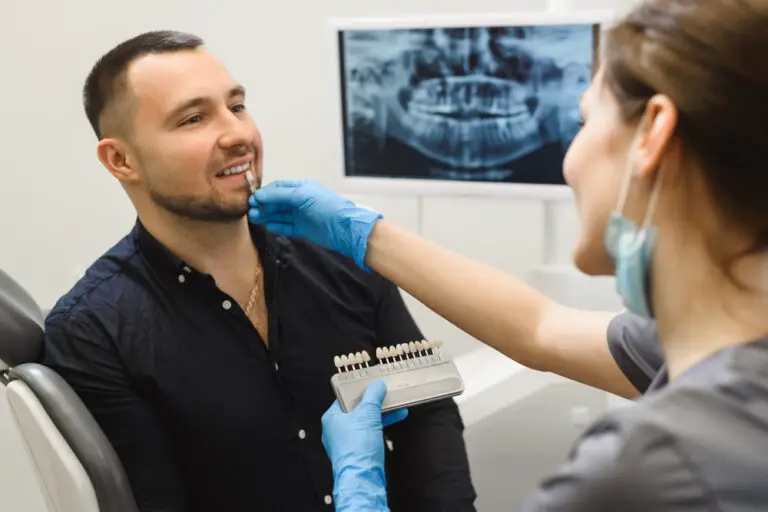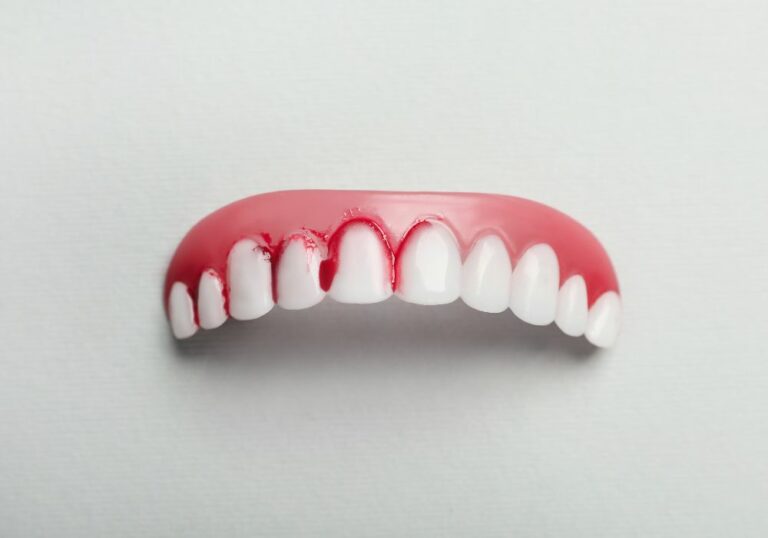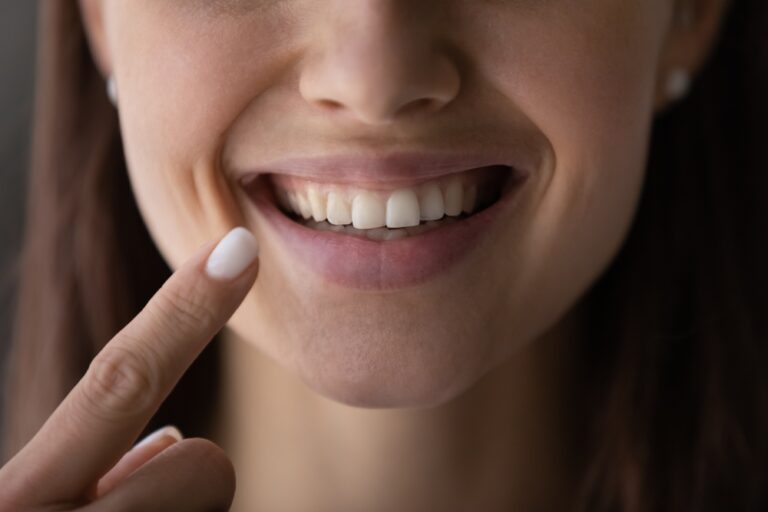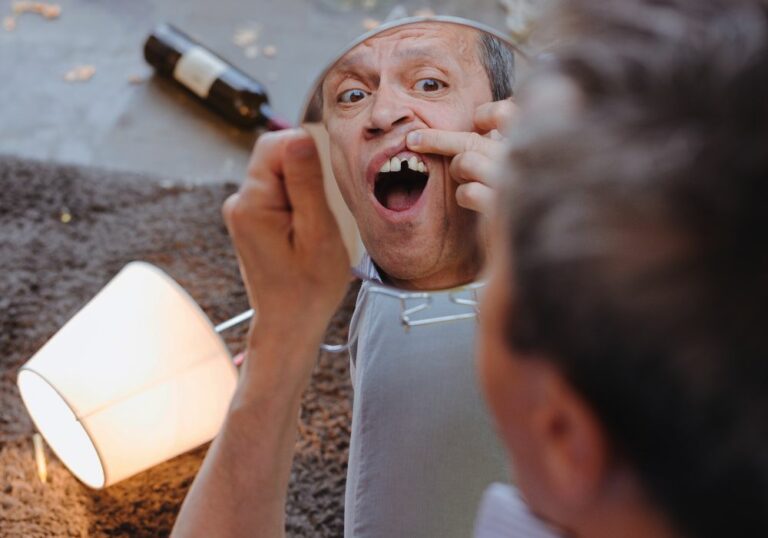The jaw and teeth work closely together for chewing, speaking, and other oral functions. Jaw alignment issues can lead to problems with teeth alignment and dental health. This in-depth article explores how jaw alignment affects teeth positioning and what treatments are available.
How jaw alignment impacts teeth
The upper and lower jaws need to fit together properly for ideal dental function. When the jaw is misaligned it can cause various issues:
Crooked, crowded, or gapped teeth
- Teeth crowding occurs when there is not enough room in the jaws for all the teeth to fit normally. The teeth will overlap each other and twist out of place.
- Excess space between teeth can cause gaps to form. Food particles can become stuck in the gaps, increasing decay risk.
- With an uneven jaw, the upper and lower teeth may not meet properly. This creates a malocclusion or poor bite relationship between the top and bottom teeth.
Changes to the bite
- An overbite is when the upper front teeth excessively overlap the lower teeth vertically. In moderate cases the lower teeth bite into the roof of the mouth. In severe overbites the lower teeth completely disappear below the upper front teeth.
- An underbite occurs when the lower row of teeth extends out further than the upper teeth. This causes the lower teeth and jaw to protrude forward.
- An open bite is when the front and/or side teeth do not overlap and meet each other properly. This leaves a gap between the upper and lower teeth when the jaw closes.
Teeth wear patterns
- With misaligned jaws, contact between upper and lower teeth is often uneven and improper. This causes abnormal wear as the teeth grind against each other.
- It can quickly lead to chipped or cracked teeth as enamel breaks down. Abnormal grinding and clenching also wears down tooth surfaces unevenly.
Jaw joint issues
- When the upper and lower jaws do not fit together correctly, it puts excess strain on the temporomandibular joints (TMJ). These are the hinge joints in front of the ears that connect the jaw to the skull.
- Jaw joint strain from malocclusion can lead to temporomandibular joint disorder (TMD). This causes symptoms like pain, popping noises, and clicking when opening and closing the mouth.
Speech impediments
- Certain speech sounds are affected by tooth and jaw alignment issues. A person may not be able to make ‘s’ sounds properly due to front teeth gaps.
- Imprecise consonant sounds like ‘ch’ and ‘th’ occur due to incorrect tongue positioning against the teeth with an uneven bite.
- Slurred or mumbled speech can result when the lips and tongue cannot form sounds cleanly around crowded or protruding teeth.
What causes jaw misalignment?
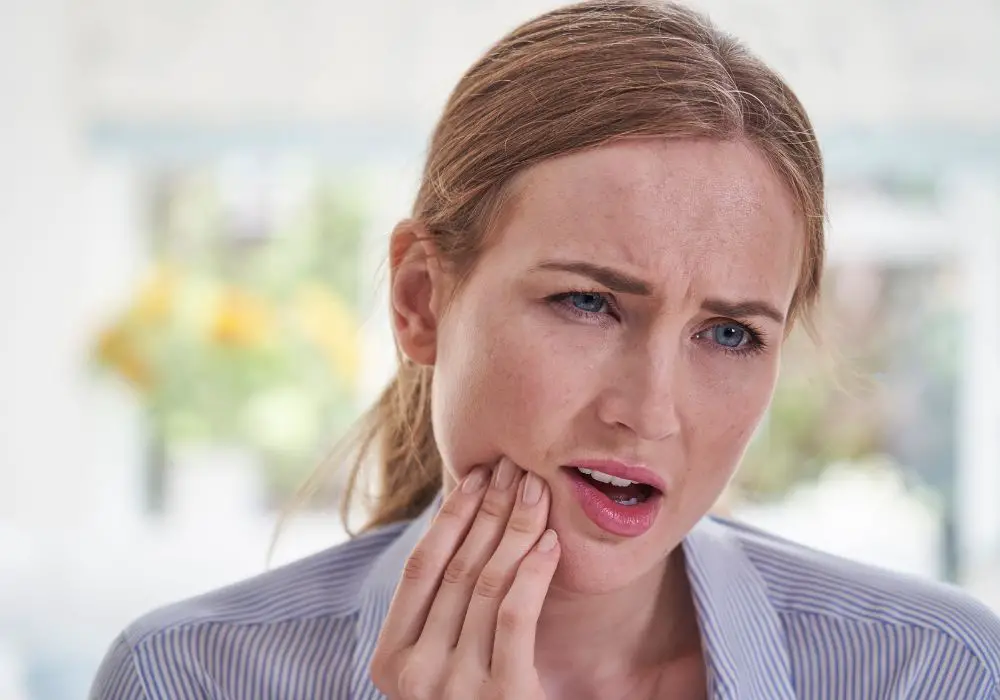
There are several possible causes of jaw growth abnormalities leading to misalignment:
Genetics
- Inherited jaw size and shape can make proper alignment difficult. Jaws that are too wide, narrow, short, or long often lead to crowded, gapped, or poorly aligned teeth.
- Some genetic conditions like Marfan syndrome that affect bone and jaw growth can impair alignment. Cleft lip and palate also cause severe misalignment.
Injury
- Injuries to the jaw, especially at a young age, can affect its growth pattern and result in misalignment. Sports injuries, vehicle accidents, or other trauma can fracture or dislocate jaw joints.
- Broken jaws often heal with asymmetry, causing the jaws to meet improperly. Growth may be stunted on an injured side.
Bruxism
- Bruxism is tooth clenching or grinding that places tremendous pressure on teeth. It often happens unconsciously during sleep.
- The forces from bruxism can gradually shift teeth out of normal alignment over time. It can also cause fractures or chipping of tooth enamel.
Thumb sucking
- Prolonged thumb sucking beyond age 5 can apply external pressure to the upper jaw. This can alter its growth pattern, making it too narrow or short.
- It can also push the lower front teeth outward, creating an overbite or overjet. This is called buccal version, where the lower teeth are angled inward.
Missing teeth
- When teeth are lost and not replaced, the surrounding teeth will naturally drift or tip into the empty space. This changes tooth angulation and disrupts proper bite alignment.
Signs of jaw misalignment
Some outward signs that indicate possible jaw alignment issues include:
- Visibly crooked, crowded, or gapped teeth
- Overbite with excessive vertical or horizontal overlap
- Underbite with lower jaw protrusion beyond the upper teeth
- Uneven wear on tooth surfaces, chips, or cracks in enamel
- Pain, popping, or clicking in the TMJ joints
- Difficulty chewing, biting into foods, or fitting dental appliances
- Speech difficulties, lisping, or mumbling
- Facial asymmetry like a crooked chin or jaw
- Chronic headaches or migraines
Effects of jaw misalignment on oral health
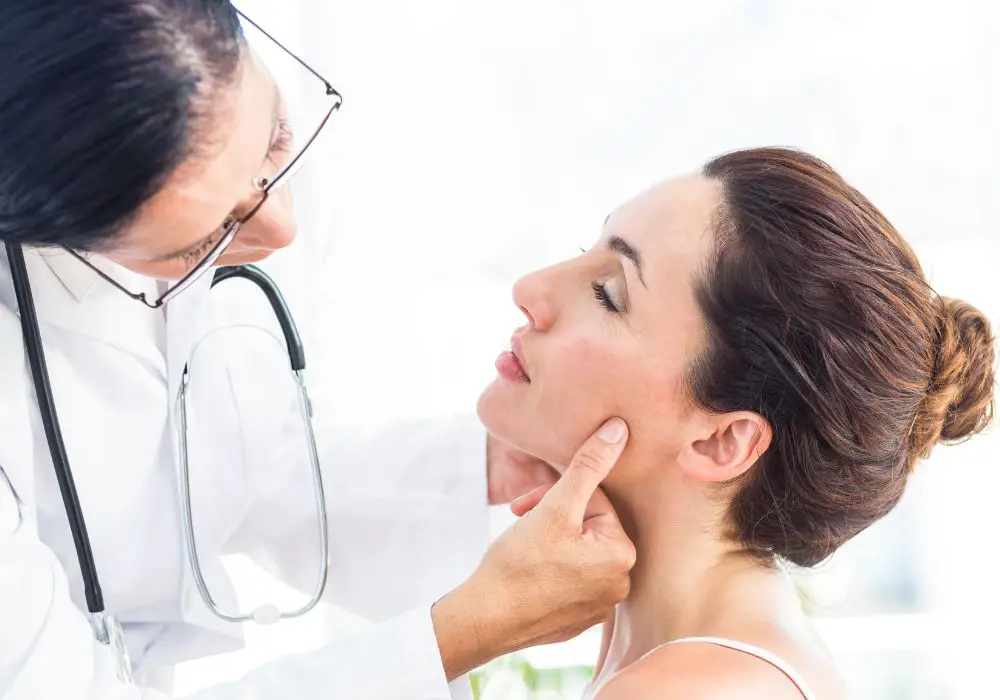
Jaw misalignment often starts a chain reaction of damage and issues in the mouth:
Accelerated tooth wear
- The abnormal bite patterns resulting from poor jaw alignment grind down tooth enamel quickly. This causes severe loss of the enamel layer.
- It leads to cavities, temperature sensitivity, and the frequent need for crowns or veneers to restore damaged teeth.
Periodontal disease
- Teeth that are crowded or crooked are harder to clean properly. This allows plaque and tartar buildup in areas that cannot be reached with a brush or floss.
- Poor cleaning of plaque inflames the gums, leading to gingivitis and eventually advanced periodontal disease. Periodontitis can destroy the bones supporting teeth and cause tooth loss if left untreated.
Increased dental work
- Crooked, crowded teeth often require orthodontic intervention to properly straighten and align them within the jaw. This can involve braces, retainers, headgear, and plates.
- Misshapen teeth may also need reshaping with enamel contouring procedures. Chipped or worn teeth frequently need crowns, veneers, or bonding to restore structure.
- Extensive dental bridgework or implants may be eventually needed to replace any teeth lost due to decay or periodontal disease worsened by poor bite alignment.
TMJ disorders
- Chronic jaw joint strain caused by improper bite alignment can lead to temporomandibular joint disorders.
- TMJ disorders cause ongoing pain, tenderness in the jaw muscles, clicking, popping in the jaw joint, and difficulty opening the mouth fully.
Sleep apnea
- A misaligned jaw or overbite can block the airway space in the throat during sleep. This interrupts normal breathing, resulting in sleep apnea with impaired sleep quality.
- Sleep apnea often requires use of a CPAP device or oral sleep apnea appliance designed to improve the airway.
Digestion problems
- Trouble chewing and biting down fully due to TMJ pain or poor bite alignment reduces proper digestion.
- Food that is not thoroughly ground down by chewing is harder to break down once it reaches the digestive tract. Poor digestion of food can cause bloating, reflux, and stomach discomfort.
Speech difficulties
- As previously mentioned, misaligned jaws and teeth greatly affect the mouth’s ability to form sounds correctly. Issues like lisping, mumbling, and impaired articulation can occur.
- Speech therapy is often needed to learn compensatory techniques to work around bite and tooth problems.
Diagnosing jaw issues
If jaw misalignment is suspected, see an orthodontist for evaluation and diagnosis.
Comprehensive exam
- The orthodontist will examine bite alignment visually, have the patient bite down, and evaluate how the jaws close together.
- They check for issues like overcrowding, overbites, underbites, and gaps between teeth. The facial profile is examined for jaw protrusion or recession.
- Lips, cheeks, and tongue are evaluated for strain from misalignment. TMJ function is assessed by feeling for popping and clicking.
Imaging techniques
- X-rays like panoramic films show overall jaw alignment and detailed tooth positioning.
- Cephalograms (head x-rays) reveal anteroposterior jaws positioning and angles between teeth and jaws.
- CT scans provide 3D images for a comprehensive view of the jaw’s shape and structure.
- Intraoral camera photos record tooth alignment from angles hard to visualize directly.
- Digital dental impressions precisely model teeth relationships.
Early diagnosis
- Early assessment while still growing gives the best chance for interceptive treatment before major orthodontic correction is needed.
- Growth modification can guide the jaws into better alignment during the late mixed or early permanent dentition stages.
- Diagnosing problems early prevents worsening and extensive repairs later on.
Seeking orthodontic treatment
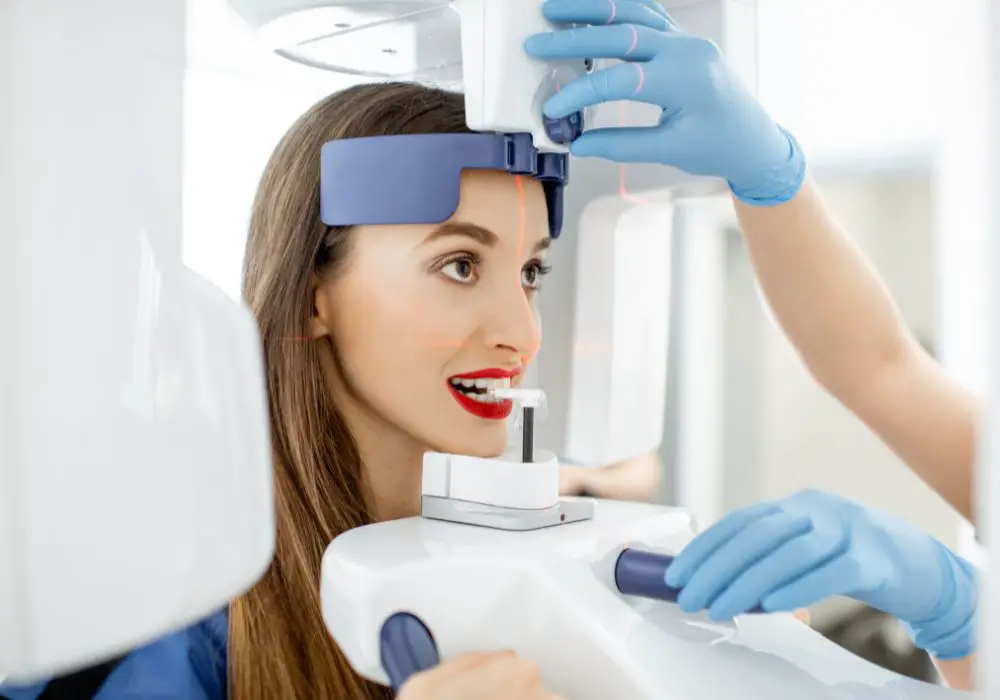
If jaw misalignment is causing dental health issues, orthodontic treatment is recommended.
Timing of treatment
- Early treatment during childhood (age 6-9) or the teenage years takes advantage of ongoing jaw growth. Growth modification at this stage helps align developing jaws.
- Comprehensive treatment during the full permanent dentition stage in early teens provides full correction of alignment.
- Adult treatment can still successfully reposition jaws and teeth. But changes may be more complicated and require jaw surgery.
Orthodontic correction options
Braces
- Today’s braces use brackets and archwires to apply precise forces that straighten and realign teeth within the jaws.
- Elastics are used to connect the upper and lower arches. This helps improve bite alignment and coordination of the upper and lower jaws.
- Clear ceramic braces are less visible for self-conscious teens. Lingual braces attach behind the teeth.
Dental plates and headgear
- Plastic plates fit over the teeth in the upper or lower jaw. They apply pressure to manipulate the direction of jaw growth or displace the jaw.
- Headgear has a strap fitting around the head or neck, attached to the braces by metal bars. This restricts jaw motion or redirects jaw growth.
Tooth removal or gaps
- Extracting teeth, often premolars, creates space to resolve crowding in misaligned jaws. This allows straightening of remaining teeth.
- Spacers hold open gaps after extracting teeth or those lost prematurely due to decay. This prevents other teeth from shifting into the spaces.
Jaw surgery
- Severe jaw misalignments may require orthognathic surgery in addition to braces before and after surgery.
- The upper jaw, lower jaw, or both can be repositioned as needed through osteotomy cuts and bone fixation.
- Chin or cheek implants can improve facial profile. Missing bone can be grafted. Portions may be removed or shaped for symmetry.
Maintaining improved dental alignment
After orthodontic treatment to correct jaw issues, retainers are critical for maintaining proper position long term.
Removable retainers
- Clear plastic retainers can be removed for eating and teeth brushing. While allowing slight natural movement, they hold teeth in alignment.
- Hawley retainers have an acrylic plate shaped to the palate and wire clasps around the teeth.
- Essix retainers are made from clear molded plastic.
Fixed retainers
- A thin wire is permanently bonded behind the front teeth to keep alignment intact. Additional wires can be attached to molars.
- Fixed retainers offer continuous holding power but aren’t removable. Special care must be taken to clean well around them.
Wearing retainers as directed
- Retainers must be worn continuously for the prescribed period to prevent teeth from shifting back after braces.
- The orthodontist will transition the patient from full-time wear to nighttime only wear.
- Expect to wear a retainer every night long-term, often permanently, to maintain improved alignment.
Proper jaw alignment facilitated by orthodontic intervention provides an ideal foundation for healthy teeth and optimal bite function. With commitment to consistent retainer use after treatment, improved tooth alignment and jaw function can be preserved lifelong.
Frequently Asked Questions
What are signs of TMJ disorder?
Common TMJ disorder symptoms include jaw muscle tenderness, pain or ache in or around the ear, clicking, popping, or grinding noises with jaw movement, and restricted ability to open the mouth. Headaches or neck pain are also associated with TMJ disorders.
How are underbites treated?
Minor underbites can be treated with braces and elastics to reposition the front teeth and improve the bite relationship. More substantial underbites require surgical correction to shorten, move back, or downsize the lower jaw.
Can a bad bite cause speech problems?
Yes, a poor bite relationship can negatively impact speech. Gaps between teeth, missing teeth, and misaligned jaws and teeth affect the mouth’s ability to form sounds. Orthodontics combined with speech therapy greatly improves enunciation.
What is the success rate of jaw surgery?
When performed by an experienced oral surgeon, orthognathic jaw surgery has a very high long-term success rate of over 90%. Positive outcomes improve facial appearance, dental function, and quality of life.
How old is too old for braces?
There is no upper age limit for orthodontic treatment. Even older adults in their 60s, 70s, or beyond can successfully and comfortably undergo treatment to fix misaligned bites and jaws. Improved dental function and aesthetics are possible at any age.

